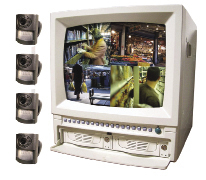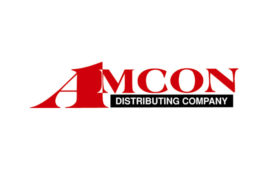Loss prevention in retail is becoming a more challenging task as the economy stumbles along. In order to keep costs down it is important to put measures into place that will deter thieves.
In a tough economy, every dollar counts. But loss prevention is often overlooked by convenience stores, even when following through on upholding policies could mean big bucks for their bottom lines.
To really tackle loss, c-stores need to look at the issue from all sides, from the people they hire to the way they train employees, and from the policies they put in place to the way they are enforced.
When faced with shrink, workers’ compensation claims and robberies, experts agree that c-store chains that implement and enforce policies from the top down and monitor the outcome end up with the best results.
“Being aware of the environment of your stores, such as where high theft items are located and trying to prevent thieves from coming to the store to steal those items is crucial, as well as setting preventative measures related to safety when engaging a shoplifter,” said Sean Sportun, manager of loss prevention and security for Alimentation Couche-Tard’s Mac’s Convenience Stores in central Canada.
In the last two years, Mac’s has implemented a $2.2 million DVR security system in all of its stores, allowing remote access into the stores from a laptop.
“This way we can dial in and see what’s going on in the stores, put measures in place to prevent things from happening or to address employee theft,” Sportun said. “We also have an extensive training program of operation awareness that each employee has to go through before they hit the sales floor and that encompasses everything from shoplifting to robbery, even with an aggressive customer.”
Indeed, conveying a consistent message of expectations, using metrics to measure and monitor results, and setting expectations for improvement are positive ways employers can attack the risk of loss at their stores, said Woody Hill, vice president of loss control for Employers, an insurance company which represents a number of convenience stores on workers’ compensation issues.
[callout title=What Customers Steal]Smaller items with high retail value are targeted by thieves because they are easy to steal and just as easy to resell. The top seven categories for shrinkage as a percentage of sales are:
• Candy, 11.1%
• Tobacco, 12.8%
• Pep/Energy Drinks, 30.95%
• Meat Snacks, 8.5%
• HBC, 9.6%
• Seasonal, 61.1%
• Batteries, 19.6%
Source: Ritter and Associates 2009 Security Survey of 5,600 Convenience Stores
[/callout]
Battling Shrink
C-store chains that are most successful in preventing loss of all kinds take ownership at the top of the organization, understand the value of good risk management practices, accountability, training and education and use that as a framework that encompasses all their locations.
C-store chains that fall short on preventing loss are more likely to lack a consistent security program or have a safety program managed by one region. “Meanwhile the other regions don’t benefit from having a central message from the corporate headquarters,” Hill said.
Convenience store decision makers that pay attention to their loss history are in a better position to improve their bottom line. “If you’re sitting in the board room you might know your loss drivers are exceeding average standards compared to other c-store operators, but you may not know what those loss drivers are,” Hill said. “It’s important to know what the loss drivers are locally to have a best in class program.”
When it comes to shrink, annual global losses total $232 billion, and the cost of managing shrinkage is $46 billion for a total cost of $278 billion, according to data from Adrian Beck’s “New Loss Prevention—Redefining Shrinkage Management.”
The first place to start in battling shrink is to focus on controlling the controllable, said Bill Ritter, president of Ritter & Associates, a retail consulting firm focused on delivering actionable customer measurement data.
“Today we have a much more technical world than ever before. There is much more business intelligence that we have available to us and more DVR capabilities than we’ve ever had before,” Ritter said.
Last year the FBI reported the convenience store industry had a 9% reduction in shrink, which they attributed to much better business intelligence, especially when it comes to the DVR, Ritter added.
Monitoring Employees
In addition to implementing available technology, one of the biggest controllable costs for c-stores is vetting the employees they hire. In today’s economy more people are out of work, which has allowed convenience stores to hire better quality employees who have remained in their positions longer compared to years past. With jobs more scarce, employees are less likely than ever to do something—like steal—to jeopardize their jobs.

C-stores with consistent security programs managed from the top down are most likely to be successful in preventing loss.
These factors have helped improve loss and turnover at convenience stores overall this year, but as the economy rebounds, it’s important to consider the hiring area as the best place to focus on avoiding shrink.
When problems with shrink do occur, Ritter recommended avoiding knee jerk reactions, such as when it comes to voids and no sales, and instead looking for the root causes of the problem. “Root causes can include operational failures, such as a fault in the design, implementation, operation, monitoring or control, which are all invitations to crime,” he said.
Design flaws include merchandising high risk products, such as candy, in the vulnerable areas of the store and failing to keep cameras on such areas to help deter theft. Operational errors might include failing to enforce the policies and procedures of the company.
“For example, we have every ability to bring our vendor theft down to zero in this industry by following simple procedures, but over and over again simple procedures are not enforced—not checking the vendor in properly, not holding them to the standards our policies aim to hold vendors to,” Ritter noted.
External Theft
Another factor retailers need to be cognizant of is the rise of organized professional shoplifting rings that are now going after c-stores. According to the National Retail Federation’s fifth annual Organized Retail Crime Survey, 92% of retailers said they were hit by organized, professional shoplifting gangs and 73% said the problem was growing, Ritter noted.
Organized retailers are stealing items that can be taken back out and resold on the Internet or elsewhere.
“This is an everyday individual who looks like you and me, and they’re trained in how to circumvent security devices and procedures. Some are now are being paid benefits to be part of retail organized crime. They have their own IT department and their own inventory online, and the people are just low level shoplifters who get paid a percentage of the profits of what they steal,” Ritter said. “They’re even given gas cards for transportation costs and given bail money in case they are caught.”
The best protection against such external theft is merchandising stores properly, upgrading surveillance systems and doing due diligence when implementing new software or security systems—including speaking with other retailers on how effective the equipment has been for them. Having policies in place for dealing with shoplifting is also crucial in minimizing loss.
At Mac’s, employees are taught to “customer service a shoplifter out of the store” rather than confronting them and accusing them of shoplifting, Sportun said. “That’s only going to lead to an aggressive response from a shoplifter, but if you use the approach of, ‘Have you found everything today? Do you need a bag for those items?’ you’ll get more of a passive response from that individual, and they’ll know they’ve been caught and will be more likely to put the items back and leave the store.”




